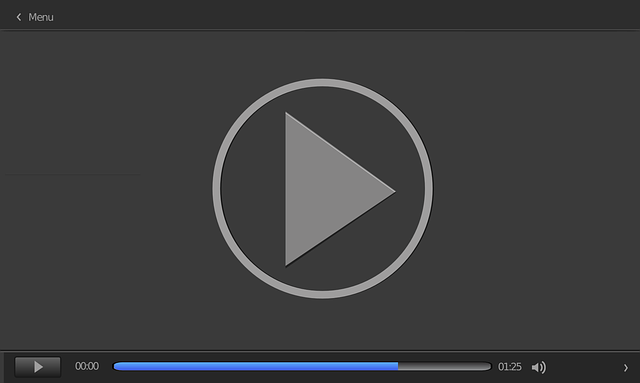The DivX file format excels in balancing image quality and file size through advanced compression techniques, making it ideal for online media sharing and streaming. Its wide compatibility ensures users can enjoy superior video experiences across various devices and platforms. Key features include delivering high-quality images at low bitrates, efficient data handling, and sophisticated motion compensation, preserving crucial image details while minimizing file sizes. DivX's versatility in terms of DivX File Format Compatibility has fueled its popularity, with success stories including streaming platforms and independent filmmakers. Future enhancements aim to maintain its relevance with improved compression algorithms and support for emerging standards like 4K and 8K, potentially integrating with VR and AR applications.
Discover the revolutionary power of DivX, a file format that delivers exceptional image quality at remarkably low bitrates. In an era demanding efficient multimedia compression without sacrificing visuals, DivX stands out. This article explores the inner workings of bitrates and their impact on image quality, delving into how DivX achieves top-tier results. We’ll uncover its advantages, real-world applications, and future prospects, shedding light on why DivX is a preferred choice for media enthusiasts and professionals alike, ensuring compatibility with various devices and platforms.
Understanding Bitrates and Image Quality

Bitrate refers to the amount of data used to represent an image or video, measured in kilobits per second (Kbps). It’s a crucial factor in determining image quality as it dictates how much detail and color information is retained. Lower bitrates compress the file size significantly, but can result in reduced picture clarity and visual artifacts. On the other hand, higher bitrates preserve more data, leading to superior image quality, albeit larger file sizes.
The DivX File Format is known for its compatibility with a wide range of devices and platforms, while also offering efficient compression at low bitrates. This makes it an excellent choice for streaming or sharing media content online where bandwidth restrictions or device limitations might exist. By balancing bitrate and quality, DivX ensures users can enjoy clear, crisp visuals without sacrificing file size, catering to both high-end hardware and more constrained environments.
The Role of DivX in Achieving High-Quality Compression

The DivX file format has played a pivotal role in enabling exceptional image quality at low bitrates. Designed to offer high-quality compression, DivX leverages advanced codecs that minimize data loss while significantly reducing file sizes. This makes it ideal for streaming and downloading multimedia content over various networks, including those with limited bandwidth.
DivX’s compatibility across multiple platforms and devices further enhances its utility. The format is widely supported by media players, streaming services, and even modern gaming consoles, ensuring that users can enjoy high-quality video experiences without sacrificing performance or efficiency. This versatility in DivX File Format Compatibility has contributed to its enduring popularity and widespread adoption in the digital media landscape.
Advantages of Using the DivX File Format

The DivX File Format offers several advantages for users looking to enjoy high-quality media with efficient file sizes. One of its key strengths lies in its ability to provide exceptional image quality even at low bitrates, making it an ideal choice for streaming and online content delivery. This is particularly beneficial for those with limited bandwidth or storage space.
Additionally, the DivX format boasts excellent compatibility across various devices and platforms. It’s widely supported by media players, streaming services, and even modern smart TVs, ensuring that users can access their favorite videos without hassle. This versatility makes it a popular choice among content creators and consumers alike, who seek a balance between quality and file size optimization.
How DivX Maneages to Deliver Top-Tier Image Quality at Low Bitrates

The DivX file format has earned its reputation for delivering exceptional image quality at remarkably low bitrates through a combination of advanced compression techniques and efficient data handling. Unlike some other formats, DivX doesn’t sacrifice visual fidelity in the name of smaller file sizes. It achieves this through sophisticated motion compensation, advanced prediction, and adaptive quantization methods that minimize data redundancy while preserving critical details in the image.
DivX leverages its compatibility with a wide range of decoders, ensuring that content encoded in this format can be accessed by a broad audience without compromising playback performance. This balance between quality and efficiency makes DivX an ideal choice for streaming media, video sharing platforms, and situations where storage space is limited but high-quality visuals are still paramount.
Real-World Applications: Success Stories of DivX Compression

In real-world applications, the DivX compression format has proven its worth across various industries. From streaming services to video production houses, professionals rely on DivX for its ability to deliver high-quality visuals while maintaining efficient file sizes. This is particularly beneficial in scenarios where bandwidth limitations or storage constraints are concerns, such as online video delivery and mobile content distribution. The DivX File Format offers compatibility with a wide range of devices and platforms, ensuring that the encoded videos can reach their intended audience seamlessly.
Success stories abound in the adoption of DivX compression. For example, many popular streaming platforms utilize DivX to optimize their video libraries, providing viewers with crisp, clear images without buffering delays or reduced quality. In video production, DivX’s capabilities have enabled independent filmmakers and content creators to produce high-definition (HD) videos that can be easily shared and viewed on various devices, enhancing the overall viewing experience for audiences worldwide.
Future Prospects and Ongoing Developments in DivX Technology

The future of video compression looks promising for DivX technology, with continuous efforts to enhance its capabilities and stay relevant in an ever-evolving digital landscape. One key area of focus is improving DivX File Format Compatibility, ensuring it can support a wide range of devices and platforms while maintaining exceptional image quality. Researchers are exploring advanced algorithms and techniques to compress video data more efficiently without sacrificing visual fidelity, making it a compelling choice for streaming services and online content delivery.
Furthermore, as technology advances, there is potential for DivX to integrate with emerging standards and protocols, such as enhancing its capabilities in 4K and 8K video compression, providing even higher-quality outputs at faster rates. These developments could make DivX a preferred format for high-demand applications like virtual reality (VR) and augmented reality (AR), where minimizing file sizes without compromising quality is crucial.
The DivX File Format has revolutionized media compression, offering exceptional image quality at remarkably low bitrates. By harnessing advanced codecs and efficient data management techniques, DivX ensures compatibility without compromising visual fidelity. As demonstrated in real-world applications, this technology continues to push boundaries, providing a bright future for streamlined multimedia delivery with top-tier performance.
